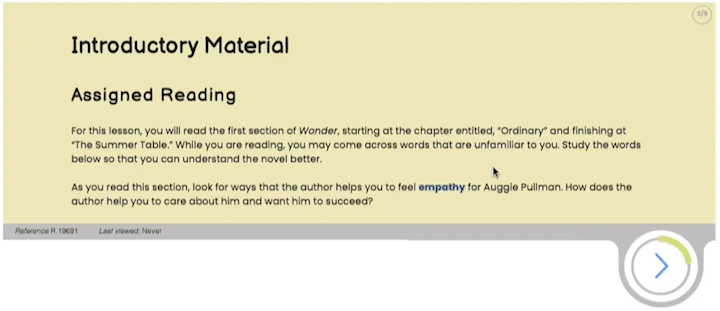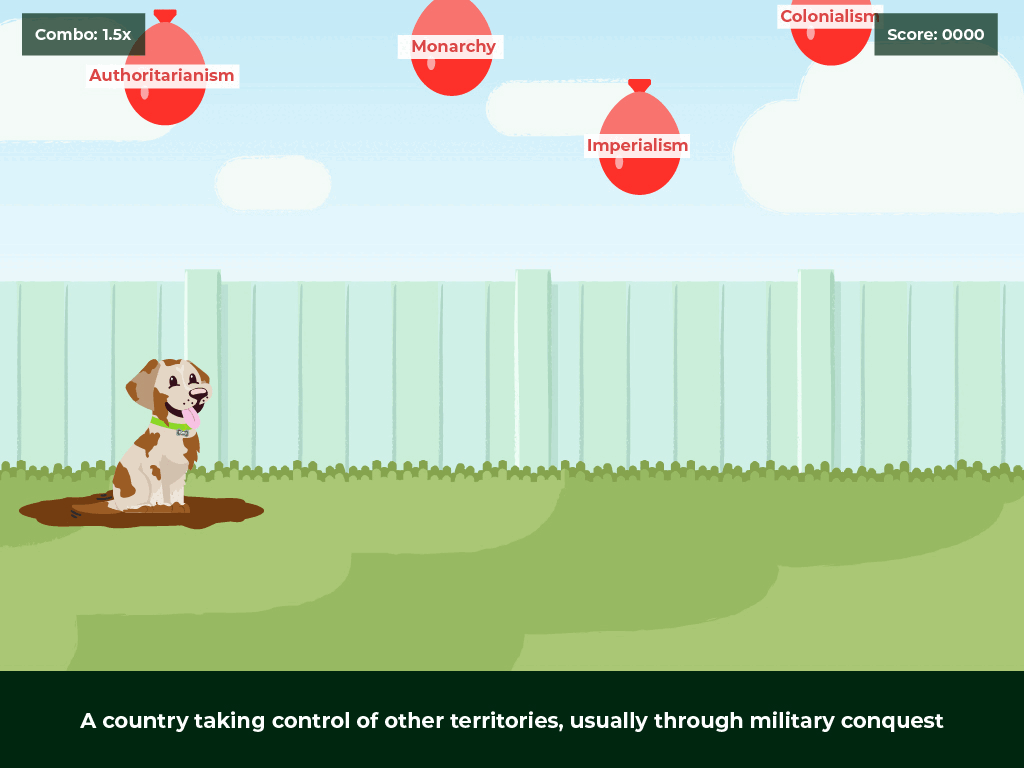The most influential teacher I ever had was always looking down on us.
Mr. Bron was my teacher for both 6th and 7th grade. He was probably the biggest reason I became a teacher, and why, when I began my teaching career, I decided to teach 6th grade. Mr. Bron consistently modeled humility, strength, intelligence, and servant leadership. He was doing project-based learning decades before it was a buzzword; he loved to create hands-on lessons that made what we were learning tangible and physical; he was always making us laugh, and even his discipline tactics would have his students giggling.
So why was he always looking down on us? Because he was six-feet, six-inches tall and we were short.
But while he always looked down on us literally, he never looked down on us figuratively. Instead, he treated us with respect and care. Mr. Bron knew how to teach adolescents.
I no longer teach middle school, but I do spend a lot of my time writing online courses for students in these critical, formative years. A few of the things I learned from Mr. Bron are still in my head whenever I write an online course for this age group..
Tip 1: Language should be simple…
At their best, online courses are like dynamic course textbooks. Most of us can remember what it feels like to read a physical textbook where you could read a paragraph six times and still not be sure what the author was talking about. Online courses should never be like that.
Learning the content can be difficult enough on its own, so putting the barrier of overly complex language in the way of a learner makes no sense. When writing for adolescents, it is important to keep your language simple.
- Talk about one thing at a time.
- Avoid long, complex sentences.
- Avoid parenthetical statements.
- Keep paragraphs bite-sized.
- Introduce new vocabulary intentionally.
I teach English and Social Studies, so I always want to be developing the vocabulary of my students, but I want to do that carefully. In StudyForge courses, when we introduce a potentially difficult word, we define it right away; if we cannot easily do that within the paragraph, we have a hover feature that allows students to see the definition immediately. If there is a lot of new vocabulary in a lesson, we include a vocabulary list at the top of the page, followed by a game or activity that lets them practice new words. This way, once they encounter the word in the lesson content, it is already somewhat familiar.


I often tell my high school students that the purpose of writing is to effectively communicate ideas; if their sentences are too complex and difficult, it gets in the way of that primary purpose. There is no need to show off how intelligent you are by writing in an inaccessible way. The same is true for online courses: Your language needs to be accessible enough that the vast majority of students taking your course are able to understand it independently.
Keep it simple!
Tip #2: …but not condescending
However, writing in a way that is too simple can also have a detrimental effect. No one likes to feel like they are being talked down to, and middle-schoolers are particularly sensitive to this. They want to feel grown-up, even though we know they are not. They want to be spoken to like equals, and if you talk to them like they are three years old, they will roll their eyes and tune you out.
Actually, they might do that anyway, but why give them a good reason?
This is particularly important for your tone of voice in any video or audio content you create. If you have a condescending tone, talking as if you were addressing a toddler or an anxious dog, you will probably lose some students.
You might feel the need to say something like, “You got it!” or “Good job!” in a video to be encouraging, but be careful. If you are congratulating them for doing something that was not challenging at all, it could induce an eye-roll. Overdo it with a sugary-sweet tone, and the gag reflex is sure to be engaged. My math-course-writing counterpart likes to say, “Nice!” in his videos, which works well. “You got it! Give yourself a BIIIIG pat on the back!” is a little much.
Here is a video on figurative language from StudyForge’s English 5 course. There is one point in the video that asks students to turn a simile into a metaphor. This is a pretty simple task, so instead of praising the students as if they just found the cure for the common cold, the video just moves forward, explaining why the student — presumably — got it right.
Your students are smart, so talk to them like they are.
Tip 3: Have a couple of students in mind while you write
One little trick I use when I am writing for a middle-school audience is to have a couple of specific students in mind. I imagine them sitting at a computer and reading what I have written or watching the video that I have just made. Having taught 6th grade for so many years, and having four kids of my own, I have plenty of people I can use as a reference point if I want to make sure I am speaking to my target audience. Here are a few “types” of students I try to have in mind:
- The anxious, studious student who wants to make sure she does everything perfectly.
- The antsy wiggle-master with a 20-second attention span who just wants to get outside and jump on the trampoline.
- The too-cool-for-school kid who is only here because his parents made him.
- The kid who has really serious problems at home and is barely holding it together.
There are dozens of other possibilities too, because middle schoolers are as diverse as the rest of the population. Who is your audience? What are they going through? How will they take what you are trying to teach through the lesson you are writing?
This leads to a couple of rules that we have for our lessons:
- Readings should be a maximum of 100 words per grade level (for example, 6th grade readings should be a maximum of 600 words).
- Lessons should be a maximum of five minutes per grade level (for example, 7th grade lessons should be, at most, about 35 minutes long).
- Make all instructions clear so students always know what to do next.
- Provide rubrics for everything you assess, and provide examples where possible.
- Never test students on something you have not prepared them for.
Finally, after you have written your lesson, come back to it the next day and try to put yourself in each of those students’ shoes as you reread your content. Or even better, ask some real students in your target grade level to try the lesson. You might be surprised how much you want to tweak after that experience!
Tip 4: Smile while you are writing
I have found that smiling while I write changes the tone of what I write. If I want my tone to be warm, inviting, and filled with humor, I try to physically smile as much as I can while I am putting a lesson together. My colleague and I co-wrote a full blog post about the importance of humor in an educational context that you might want to spend some time with; for this article, though, I would like to emphasize that making middle-schoolers laugh is a critical part of making them care about what they are learning.
Let’s face it: There are some really boring learning standards that we are going to have to address at some point in our online courses. That does not mean, though, that we have to teach them in a boring way. Spice it up! Make them laugh!
Here is a video on homophones — not exactly an uproariously funny topic. Watch the first 60 seconds or so, then skip to the 3:15-mark.
Here is another video on forms of government that we made for Social Studies 6. Again, not exactly an amusement-park topic, but we did our best to make it entertaining.
Humor — even slightly cheesy humor — can build trust, lower defenses, and open students’ minds to learning.
Write with a smile on your face, and you might just trick them into learning something.
Tip 5: Repeat yourself when necessary; it is always necessary
I am partially deaf, with very limited hearing in one of my ears.
“It just so happens that your friend here is only mostly deaf.”
Anybody?
I thought my deafness would be a convenient excuse in my marriage, allowing me to say, “Honey, I didn’t hear you!” whenever I missed important information. In reality, though, my deafness has nothing to do with it. I, like all human beings, need to hear information more than once before my brain registers it as important and worthy of remembering.
Classroom teachers know that if you want students to really get something, you will need to repeat yourself over and over. Online courses are the same.
- Students’ eyes will skim over important information.
- Students will lose focus and miss something important.
- Students will read something and promptly forget it.
So just like my wife needs to repeat things two or three times before I go, “Oh yeah, I should remember that,” repeat yourself when creating an online course. Circle back to key information. Present it in a reading, a video, a quiz, and a review sheet.
If you want it to stick, say it again, Sam.
Conclusion
You will notice that this article is not focused on how to be sure your online course meets state or provincial learning standards, how to organize your course for maximal effectiveness, or which pedagogical tools have been shown to be the most effective for middle schoolers. That is because, as important as these things are, at the end of the day, students will remember how you treated them more than what you taught them. Or, as my first principal used to say, “They won’t care how much you know until they know how much you care.”
Good advice. I think Mr. Bron would agree.
About the Author






